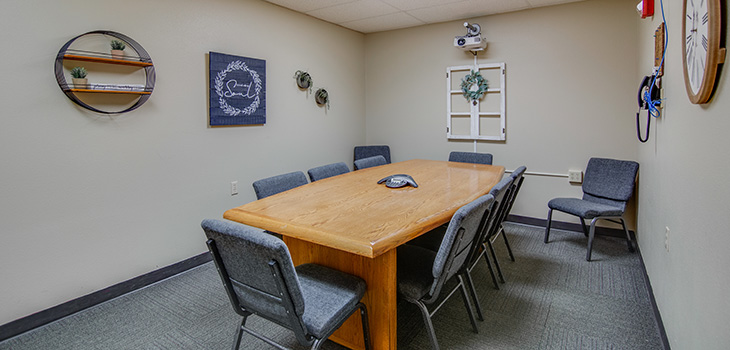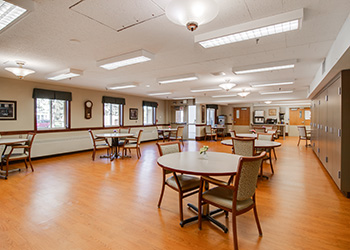Indoor Visitation Guidelines

Guidance
Visitation can be conducted through different means based on a facility’s structure and residents’ needs, such as in resident rooms, dedicated visitation spaces, outdoors, and for circumstances beyond compassionate care situations. Regardless of how visits are conducted, there are certain core principles and best practices that reduce the risk of COVID-19 transmission:
Core Principles: Must comply
- Screening of all who enter the facility for signs and symptoms of COVID-19 (e.g., temperature checks, questions, or observations about signs or symptoms), and denial of entry of those with signs or symptoms
- Hand hygiene (use of alcohol-based hand rub is preferred)
- Face covering or mask (covering mouth and nose)
- Social distancing at least six feet between persons
- Instructional signage throughout the facility and proper visitor education on COVID-19 signs and symptoms, infection control precautions, other applicable facility practices (e.g., use of face-covering or mask, specified entries, exits, and routes to designated areas, hand hygiene)
- Cleaning and disinfecting high frequency touched surfaces in the facility often, and designated visitation areas after each visit
- Appropriate staff use of Personal Protective Equipment (PPE)
- Effective cohorting of residents (e.g., separate areas dedicated COVID-19 care)
- Resident and staff testing conducted as required at 42 CFR 483.80(h) (see QSO-20-38-NH)
Facilities should accommodate and support indoor visitation, including visits for reasons beyond compassionate care situations, based on the following guidelines:
- There has been no new onset of COVID-19 cases in the last 14 days and the facility is not currently conducting outbreak testing; (an outbreak is when there is one or more employees or residents positive)
- Visitors should be able to adhere to the core principles and staff should provide monitoring for those who may have difficulty adhering to core principles, such as children.
- Facilities should limit the number of visitors per resident at one time and limit the total number of visitors in the facility at one time (based on the size of the building and physical space). Facilities should consider scheduling visits for a specified length of time to help ensure all residents are able to receive visitors; and
- Facilities should limit movement in the facility. For example, Visitors should not walk around different halls of the facility. Rather they should go directly to the resident’s room or designated visitation area. Visits for the residents who share a room should not be conducted in the resident’s room.
Note: for situations where there is a roommate and the health status of the resident prevents them from leaving the room, facilities should attempt to enable in-room visitation while adhering to the core principles of COVID – 19 prevention.












